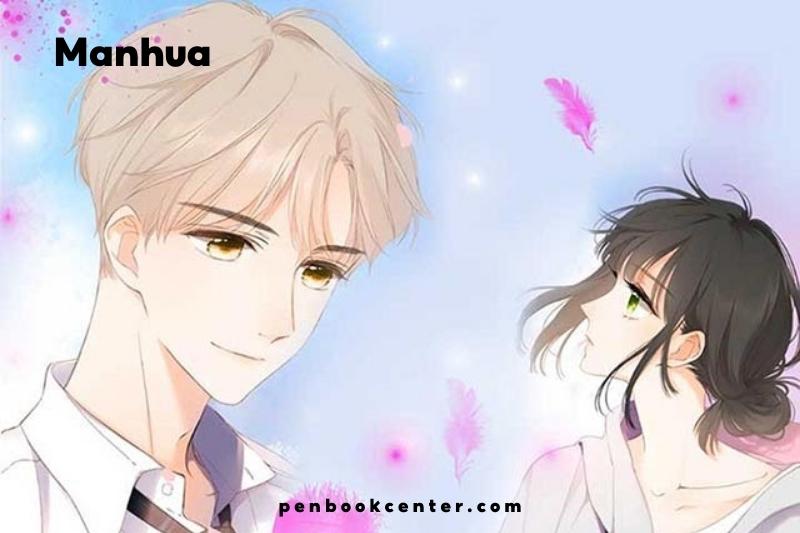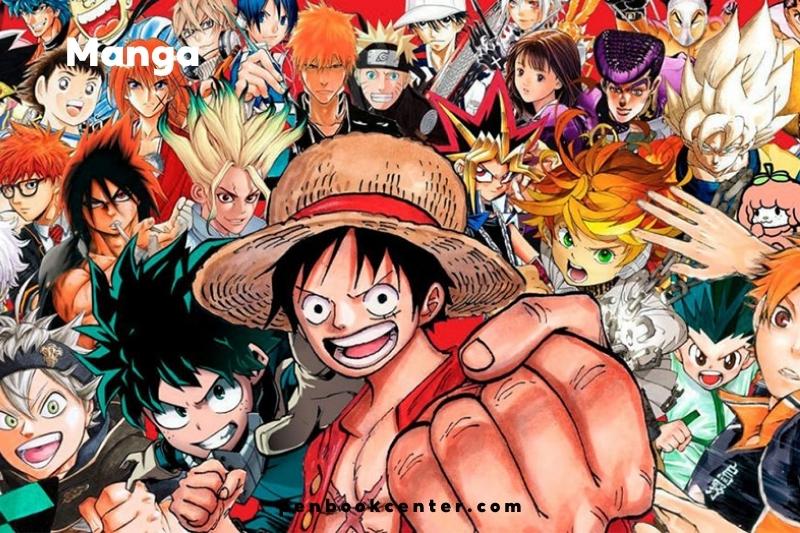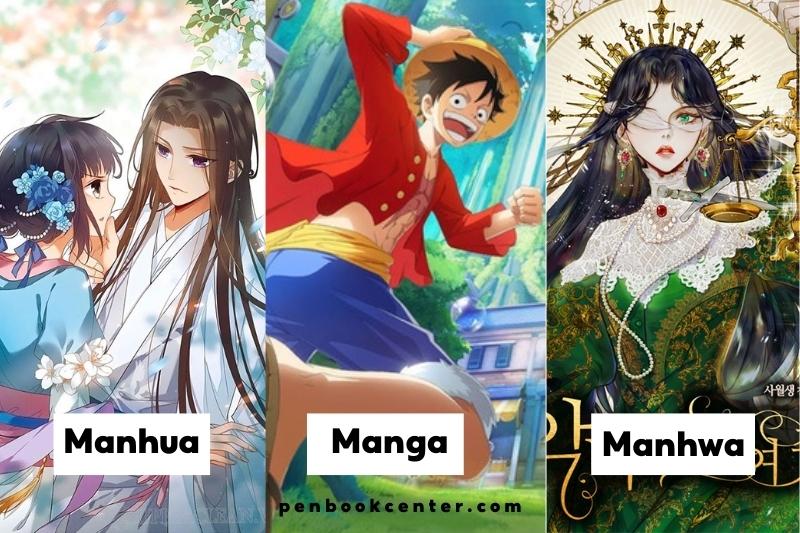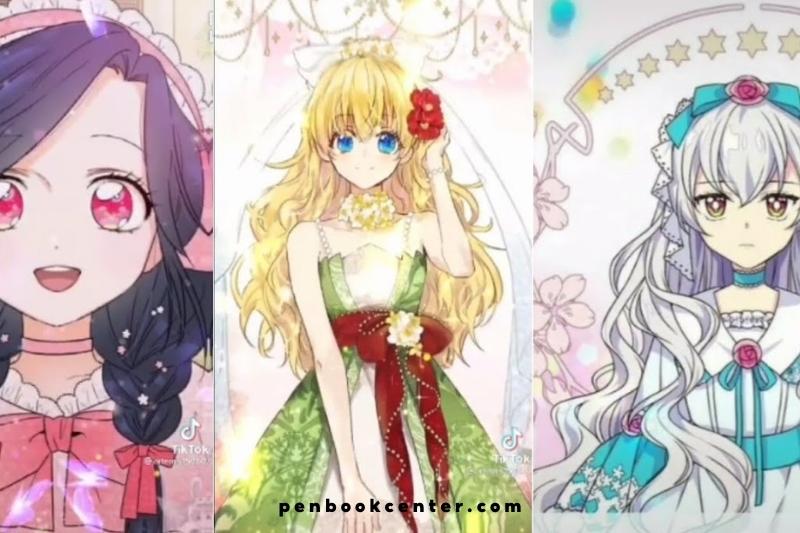[Ecis2023]
The distinction between manhua, manga and manhwa has gotten more blurred in recent years. So, what exactly is the difference between the two?
You are reading: Difference Between Manhua, Manga And Manhwa, Did You Know? Best 2022
Manhwa is a Korean comic book, while manga is a Japanese comic book. Both are known for their vibrant painting styles and fast-paced narratives. While manhua, manga and manhwa have certain similarities, they also have some significant distinctions.
If you’re a lover of manhua, manga or manhwa, it’s essential to understand the differences! Here are some of the fundamentaldifferences between manhua, manga and manhwa.
Table of Contents
- 1 Etymology Of Manhua, Manga And Manhwa
- 1.1 Manhua
- 1.2 Manga
- 1.3 Manhwa
- 2 Difference Between Manhua, Manga And Manhwa
- 2.1 The History of Manga, Manhwa & Manhua
- 2.2 The Ideal Readers
- 2.3 Cultural Content & Reading Direction
- 2.4 The Artwork & Text
- 3 Conclusion
Etymology Of Manhua, Manga And Manhwa
Let’s define these three words and investigate their origins before getting started.
Manga is Japanese, manhwa is Korean, and manhua is Chinese, Taiwanese, or Hong Kong-based.
Both the Japanese and Korean words manga and manhwa are derived from the Chinese term manhua, which roughly translates as impromptu drawings.
Before their worldwide prominence, the names were often used interchangeably to describe all sorts of comics and graphic novels, regardless of origin. However, criteria have grown more definite in recent years to indicate the comic’s place of birth due to a fast-rising worldwide viewership.
Before their worldwide prominence, the names were often used interchangeably to describe all sorts of comics and graphic novels, regardless of origin. However, criteria have grown more definite in recent years to indicate the comic’s place of birth due to a fast-rising worldwide viewership.
Manhua

Manhua, which are comics made entirely in China, Taiwan, or Hong Kong, is the last item on this list of East Asian exports.
The 1904 Current Affairs Comics, which gave a commentary on war and politics at the time, was the first published manhua. Over the following two decades, this new art form continued to establish itself. Shanghai Sketch, the first-ever devoted manhua journal, was founded in 1928.
The magazine generated a tiny but vibrant manhua scene in mainland China and Hong Kong. By the mid-1950s, a second popular newspaper, Cartoons World, had joined the market. This exposed manhua to a whole new generation of followers and cemented its status as a significant aspect of Chinese culture.
But, like Korea’s manhwa, manhua has been subjected to government censorship and control throughout the years, and many satirical or controversial cartoons have been blocked and erased since the internet’s inception.
What Makes a Manhua Special?
Depending on where they originate from, manhua comics and graphic novels may be read from left to right or right to left. In general, mainland Chinese manhua are read from left to right, whereas those from Hong Kong and Taiwan are read from right to left.
A manhuajia is a person who makes manhua. Like Korean manhwagas, they show their characters in a more realistic and less stylised manner than their Japanese counterparts.
In their more popular computerized incarnations, Manhua comics are usually printed in full color rather than black and white. Manhua has taken on a new animation form in recent years, thanks to shows like Yi Ren Zhi Xia and Soul Buster.
Manhua is getting more popular, with a rising demand for these comics and graphic novels all across the globe.
- Best Boss Vs Leader Quotes to Uplift Your Business [ecis2023]
- Top Aesthetic Deep Short Quotes To Melt Your Heart 2022
- Top 150 Best When You Just Don’t Care Anymore Quotes 2022
- Top 100 Best What A Woman Wants In A Man Quotes And Sayings 2022
- Top Inspirational Women Who Run With The Wolves Quotes 2022
However, unlike manga and manhwa, which cover a wide range of topics, manhua mainly fits into one of four categories: politics, humor, action, and children, so whether it can ever surpass manga’s popularity remains to be seen.
Manga

Manga is Japan’s most popular export. You’re certainly aware of those classic paintings showcasing cartoonish characters with huge eyes no matter where you go around the globe.
Although the art genre acquired popularity in the nineteenth century, its famed iconography is based on older Japanese art.
What Makes Manga So Special?
Manga’s monochromatic format is the most visible element distinguishing it from manhwa and manhua. While full-color front covers are sometimes seen, manga is nearly always published in black & white.
All original manga is written in Japanese, and the layout is supposed to be read from right to left. However, many popular shows are now translated into numerous languages for a worldwide audience due to a large international fandom.
Weekly magazines like Shonen Jump, Shueisha, and Kodansha have historically published manga. However, monthly manga publications have grown in popularity in recent years.
Issues are often combined into whole volumes after a series has established itself and many published chapters. As a result, collecting every original publication isn’t necessary to follow the plot.
A manga author is referred to as a mangaka. Still, since a series might last for years, if not decades, numerous mangakas are often involved in the same project.
Plus, since these tense storylines and sophisticated artwork need a large crew to see them through to publication, there are generally lots of non-mangaka working behind the scenes.
Manga’s Ascension
Read also : Top Best Real NBA Youngboy Quotes And Lyrics [ecis2023]
Manga brings in a significant quantity of money for Japan’s economy. Its popularity has exploded over the past three decades, first in the United States and Canada, then throughout Europe. Today, readers can be found in every corner of the globe.
Manga currently outsells every other comic or graphic book style in the United States, and it’s the same across the world.
Manga is such a large industry in Japan that aspiring painters and writers learn at institutions all around the country to be the best in their area.
Many manga creators have also moved to anime, another prominent contemporary Japanese art form. In reality, most anime is based on the original manga, such as the popular Fullmetal Alchemist series and Demon Slayer Mugen.
Genres of Manga
There are hundreds of genres in the manga world, so there is something for everyone, regardless of their age or hobbies.
Because there are far too many to discuss in one piece, a few of the most popular.
- Shônen
Shônen manga is geared towards teenage males. Still, due to a recent change in ideas about conventional gender norms, many young girls are now reading shônen. Despite this, the primary character is usually invariably a man.
Shônen is known for its high-octane action sequences and epic adventures, which often include mild horror and violence aspects.
- Shôjo
The bulk of Shôjo manga readers are adolescent females, which makes sense given that the genre’s name is derived from a Japanese phrase, young lady.
Shôjo is more about emotional difficulties and relationships between friends and couples than action and adventure.
The artwork is idealized, with lots of bright, feminine symbols like hearts and flowers used to convey the people’s emotions in the story.
- Seinen
The name seinen means youth, yet unlike Shônen and Shôjo, this is a considerably more adult-oriented genre. Males between the ages of 18 and 30 are the most common readers. At the same time, certain seinen periodicals also have a following of businesspeople in their 40s and beyond.
The seinen genre covers various topics, from science fiction to erotica. Unlike the more basic high-action shonen manga, the tales frequently deal with grittier subjects and emphasize character and plot development.
- Josei
Josei manga is a more mature variant of shôjo manga. While it still has friends and romantic themes and emphasizes feeling over action, the artwork is less idealized. The characters are more complicated, and the story incorporates more adult and tough issues.
- Shoujo-ai and Shounen-ai
Sometimes known as yuri and yaoi, these two genres center on LGBTQ+ relationships. While some tales are exclusively romantic, many others are jam-packed with action and adventure, horror and violence, and everything.
Manhwa

Although Korean manhwa is not as well-known and appreciated as manga, there are still several notable works that have been published outside of Korea. Its popularity among worldwide audiences is rising, particularly among manga fans searching for something fresh to try.
Manhwa is a distinct genre, yet its beginnings are firmly anchored in manga and stretch back to the early twentieth century, when Korea was still under Japanese colonization.
However, manhwa’s popularity did not emerge immediately, and it wasn’t until the 1950s and 1960s that it really took off in Korea.
This is largely because certain political manhwa was deemed contentious during the Japanese occupation. The government even sought to suppress the artform entirely. Censorship remained in place for many years, explaining manhwa’s sluggish rise to popularity both in Korea and outside.
With the emergence of online comic sharing services like Lezhin and LINE Webtoon, manhwa had its first big surge in the 2010s. Koreans now had access to a vast selection of previously unavailable publications, spawning a new generation of admirers.
With the emergence of online comic sharing services like Lezhin and LINE Webtoon, manhwa had its first big surge in the 2010s. Koreans now had access to a vast selection of previously unavailable publications, spawning a new generation of admirers.
This digital-only tendency has persisted that most manhwa can now only be accessed online rather than in print.
What Makes a Manhwa Special?
Many of the elements of these comics and graphic novels are similar to Japanese manga. Still, there are some important distinctions as well.
One of the most striking differences is that manhwa is read from left to right like English-language comics and graphic novels. This makes it simpler for Western viewers who are more familiar with the genre. Still, it’s something to think about if you’re already a manga reader.
Although all original manhwa are published in Korean, several of the most popular series have also been translated into other languages.
Manhwa, on the other hand, is still popular outside of Asia. And, even though the worldwide fan base is expanding by the day, there aren’t nearly as many English-language books available as there are in the manga industry.
Manhwa artists are referred to as manhwaga, and their artistic style differs significantly from most comics. Characters still have huge, comical eyes, but they’re more realistic and less stylised than before.
Another significant distinction is that, unlike manga, manhwa is often made in full color, particularly when it is published online as a webtoon (which is more often than not).
What Are Webtoons?
Although some people use the phrases webtoons and manhwa interchangeably, they are not synonymous.
Read also : Best What Dreams May Come Quotes [ecis2023]
A webtoon is a full-color manhwa that is only accessible online. Webtoons are the most popular kind of manhwa nowadays, and most classic in-print manhwa is only available to dedicated collectors.
Difference Between Manhua, Manga And Manhwa

The History of Manga, Manhwa & Manhua
The terms manga and manhwa actually come from the Chinese term manhua, which means impromptu drawings. Originally, these terms were used within Japan, Korea and China, respectively, as general terms for all comics and graphic novels, regardless of the country of origin.
Now, international readers use these terms to address comics published from a specific country: manga are Japanese comics, manhwa are Korean comics and manhua are Chinese comics.
The creators of these East Asian comics also have specific titles: a person who makes manga is a mangaka, a person who creates manhwa is a manhwaga and a person that makes manhua is a manhuajia. Along with etymology, each country has also historically influenced one another’s comics.
In mid-20th century Japan, the popularity of manga skyrocketed with the Godfather of Manga, Tezuka Osamu, the creator of Astro Boy. However, scholars believed that the origin of manga started earlier, around the 12th to 13th century, with the publishing of the Chōjū-giga (Scrolls of Frolicking Animals), a collection of animal drawings by various artists.
During the American Occupation (1945 to 1952), American soldiers brought European and American comics, which influenced mangakas’ art style and creativity. There was a great demand for manga due to increased readership in the 1950s to 1960s. Soon after, manga became a global phenomenon with overseas readership starting in the late 1980s.
Manhwa has its own history of development. During the Japanese Occupation (1910-1945) of Korea, Japanese soldiers brought their culture and language into Korean society, including the importation of manga. In the 1930s to 1950s, manhwa was used as propaganda for war efforts and to impose a political ideology on civilians.
Manhwa became popular during the 1950s to 1960s but declined due to the strict censorship laws in the mid-1960s. However, manhwa became popular again when South Korea launched websites that publish digital manhwa known as webtoons, such as Daum Webtoon in 2003 and Naver Webtoon in 2004. Then in 2014, Naver Webtoon launched globally as LINE Webtoon.
Manhua are comics from China, Taiwan and Hong Kong. Manhua is said to have started in the early-20th century by introducing the lithographic printing process. Some manhua were politically-driven with stories about the Second Sino-Japanese War and the Japanese Occupation of Hong Kong.
Yet, after the Chinese Revolution in 1949, there were strict censorship laws, resulting in manhua having a difficult time being legally published overseas. However, manhuajia began self-publishing their work on social media and webcomic platforms like QQ Comic and Vcomic.
The Ideal Readers
East Asian comics have specified content to attract different demographics, usually based on age and gender. In Japan, boys’ shonen manga is filled with high-action and adventure stories like My Hero Academia and Naruto. Girls’ shoujo manga is mainly features magical girl stories like Cardcaptor Sakura and complex romances like Fruits Basket.
There are also manga seinen and josei skew older and feature more mature content. Similarly, manhwa and manhua have comics aimed at specific demographics.
In Japan, manga chapters are published in weekly or biweekly magazines like Shonen Jump. If a manga becomes popular, it is published in tankōbon collected volumes. As for digital manhwa and manhua, chapters are uploaded weekly on webtoon platforms.

Cultural Content & Reading Direction
The content of an East Asian comic reflects its origin culture and values. In manga, there are numerous fantasy and supernatural stories about shinigami death gods such as Bleach and Death Note. Manhwa, often has storylines related to the Korean beauty culture like True Beauty. At the same time, manhua, features many wuxia (martial arts chivalry) themed comics.
Although manhua has captivating storylines, it’s also been criticized for a foundational lack of a coherent narrative. However, this shouldn’t discourage you from giving manhua a try.
Manga and manhua are read from right to left and top to bottom. However, manhwa is similar to American and European comics. They’re read from left to right and from top to bottom. The layouts are read from top to bottom, allowing for infinite scrolling when it comes to digital comics.
Printed manga has limitations when depicting movement in the artwork; however, the vertical layout and infinite scrolling in digital manhwa and manhua are used to strategically depict the movement of objects descending or the passage of time.
The Artwork & Text
Manga is usually published in black and white in print and digital, unless they are special releases and printed in full color or with color pages. Digital manhwa is published in color, but print manhwa is traditionally published in black and white, similar to manga. Like manhwa, digital manhua is also published in color.
Inspired by the art of Walt Disney, Tezuka Osamu drew his characters with big eyes, small mouths and exaggerated facial expressions to emphasize certain emotions. Tezuka’s art style influenced the artwork of other artists in Japan and elsewhere. However, manhwa and manhua characters are drawn to focus on more realistic human proportions and appearances.
Manga and manhwa also have realistic and detailed background settings, almost photo-realistic, in contrast to digital manhwa which has simpler backgrounds though it should be noted that print manhwa is more similar to manga in this regard.
Manga also uses a unique set of onomatopoeia in their narratives to describe the sounds of animals and inanimate objects and the sounds of psychological states and emotions. These onomatopoeia are written in a page’s surrounding panels and gutters, much like American comics.
Likewise, manhwa and manhua have their own set of onomatopoeia used to describe emotions and movements. Also, digital manhwa often use music and soundbites to enhance the reading experience, something novel to their electronic presentation.
With the internet, we have easy access to many East Asian comics. Whether you are reading manga, manhwa or manhua, each comic has its merits, which only enhance the reading experience for anyone anywhere.
Conclusion
Manhua, manga and manhwa, in all its forms, will continue to grow in worldwide acclaim. And as they become more well-known, so will their clout. Webtoons now include digital comics from throughout the globe, as we’ve previously seen.
There are increasing numbers of North American publishers that plan on producing manga in the English language, such as World Piece. Both formats’ extensive availability and accessibility will impact any parallels or distinctions in the future.
Whether manga, manhwa, or manhua, an anime may appeal to you. What is your favorite and why? Please share your thoughts in the section below.
Read more:
- Best Graphic Novels VS Comic Books: What’s the difference? [2022]
- Top 28 Best Manga Like Solo Leveling To Read Reviews [2022]
- How To Read Manga? Best Full Guide 2022
- Top 50+ Best Comic Books Of All Time Review [2022]
- How Does Negan Die In The Walking Dead Comic Books? [2022]
Source: ecis2016.org
Copyright belongs to: ecis2016.org
Please do not copy without the permission of the author
Source: https://ecis2016.org
Category: Blog
![Where To Buy Used Books? Best Place to Buy Used Books Online [ecis2023] 1 How Many Outlander Books Are There 300x200 1](https://ecis2016.org/wp-content/uploads/2022/06/How-Many-Outlander-Books-Are-There-300x200-1.jpg)

![How To Put Books On Kindle Paperwhite? Best Full Guide [ecis2023] 3 Why Are College Books So Expensive 300x200 1](https://ecis2016.org/wp-content/uploads/2022/06/Why-Are-College-Books-So-Expensive-300x200-1.jpg)

![How To Read Google Play Books On Kindle? Best Guide [ecis2023] 5 Physical Books Vs Ebooks 300x156 1](https://ecis2016.org/wp-content/uploads/2022/06/Physical-Books-Vs-Ebooks-300x156-1.jpg)